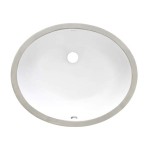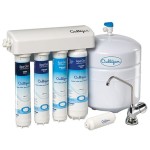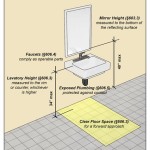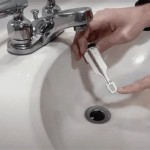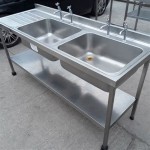Unclogging a Sink Drain with Baking Soda: A Comprehensive Guide
A clogged sink drain is a common household problem, often resulting in inconvenience and frustration. The accumulation of soap scum, hair, grease, and food particles can gradually restrict water flow, eventually leading to a complete blockage. While commercial drain cleaners are readily available, many contain harsh chemicals that can damage pipes and pose environmental risks. A safer and more environmentally friendly alternative involves utilizing baking soda, a versatile household staple, in conjunction with other readily available ingredients.
Baking soda, also known as sodium bicarbonate, possesses mild abrasive and deodorizing properties. When combined with an acid, such as vinegar, a chemical reaction occurs, producing carbon dioxide gas. This effervescent action can help to loosen and dislodge the debris causing the clog. This article provides a detailed explanation of how to effectively unclog a sink drain using baking soda, outlining various methods and considerations for optimal results.
Before proceeding with any drain cleaning method, it is crucial to assess the severity of the clog. A slow-draining sink may respond well to simple remedies, while a completely blocked drain might require more aggressive techniques. Furthermore, individuals should wear appropriate protective gear, such as rubber gloves and eye protection, to minimize potential skin and eye irritation from drain debris.
Preparation and Initial Assessment
The initial step in unclogging a sink drain involves preparing the area and assessing the extent of the blockage. Begin by removing any standing water from the sink basin. This can be accomplished using a cup, sponge, or wet/dry vacuum. Removing the standing water allows for better access to the drain opening and ensures that the baking soda mixture can directly target the clog.
Next, inspect the drain opening for any visible debris, such as hair or large food particles. These can often be removed manually using tweezers, pliers, or a bent wire hanger. Removing visible debris can significantly improve the effectiveness of subsequent cleaning methods.
Following the removal of visible debris, it is beneficial to test the drain's drainage rate. Pour a small amount of water into the sink and observe how quickly it drains. This provides a baseline for evaluating the success of the unclogging efforts. If the water drains very slowly or not at all, proceed to the next steps involving baking soda.
Before introducing any cleaning agents, it is also prudent to consider the sink material and plumbing system. Certain types of pipes, such as those made of older materials, may be more susceptible to damage from harsh chemicals or aggressive cleaning methods. If there are concerns about the integrity of the plumbing system, it is advisable to consult a professional plumber.
Baking Soda and Vinegar Method
The most common and effective method for unclogging a sink drain with baking soda involves combining it with vinegar. This combination creates a chemical reaction that can break down organic matter and dislodge the clog.
To begin, pour approximately one cup of baking soda down the drain. Ensure that the baking soda is distributed evenly within the drainpipe. Follow this by pouring one cup of white vinegar down the drain. The mixture will immediately begin to fizz and bubble as the baking soda and vinegar react.
Allow the mixture to sit for at least 30 minutes, or preferably overnight, for optimal results. The longer the mixture sits, the more time it has to break down the clog. During this time, it is advisable to cover the drain opening with a plug or tape to contain the fumes and pressure generated by the reaction.
After the designated time has elapsed, flush the drain with hot water. The hot water will help to further dissolve any remaining debris and flush it out of the drainpipe. Run the hot water for several minutes, monitoring the drainage rate to assess the effectiveness of the treatment.
If the drain is still slow or clogged, repeat the baking soda and vinegar treatment. It may be necessary to repeat the process multiple times for stubborn clogs. Alternatively, consider using a drain snake or plunger to further dislodge the blockage after the baking soda and vinegar treatment.
The effectiveness of this method relies on the chemical reaction between baking soda and vinegar. Vinegar, being a weak acid, reacts with the bicarbonate in baking soda, creating carbon dioxide and water. The escaping carbon dioxide gas creates pressure that helps to agitate and loosen the clog. The heat from the subsequent hot water flush further aids in the process.
Baking Soda and Boiling Water Method
Another effective method for unclogging a sink drain using baking soda involves combining it with boiling water. This method is particularly useful for clogs caused by grease or soap scum, as the boiling water helps to melt and dissolve these substances.
Start by pouring approximately one cup of baking soda down the drain. Allow the baking soda to settle in the drainpipe for a few minutes. This allows the baking soda to coat the clog and prepare it for the boiling water treatment.
Next, carefully pour a kettle or pot of boiling water down the drain. Exercise caution when handling boiling water to avoid burns or scalds. Pour the water slowly and steadily to allow it to penetrate the clog effectively.
Allow the boiling water to sit in the drainpipe for several minutes. This allows the heat to break down the grease and soap scum causing the clog. After a few minutes, flush the drain with hot tap water to further dislodge and flush out any remaining debris.
If the drain is still slow or clogged, repeat the baking soda and boiling water treatment. Multiple applications may be necessary for stubborn clogs. It is also important to verify that the pipes are able to withstand the heat from the boiling water to prevent any damage to the plumbing system.
For this method to be effective, it is vital to use truly boiling water. The high temperature of the water is crucial for melting and dissolving the grease and soap scum. Inadequate heat will render the method less effective. Also, safety precautions need to be adhered to when working with boiling water.
Baking Soda, Salt, and Boiling Water Method
A more potent variation of the baking soda and boiling water method involves adding salt to the mixture. Salt acts as an abrasive agent, helping to scrub the interior of the drainpipe and dislodge stubborn debris.
Begin by mixing together equal parts of baking soda and salt, approximately one-half cup of each. Pour this mixture down the drain, ensuring that it is evenly distributed within the drainpipe. Allow the mixture to sit for several minutes to allow the salt to act as an abrasive.
Next, carefully pour a kettle or pot of boiling water down the drain. As with the previous method, exercise caution when handling boiling water to avoid burns or scalds. Pour the water slowly and steadily to allow it to penetrate the clog effectively.
Allow the boiling water to sit in the drainpipe for an extended period, preferably overnight. This allows the combined action of the baking soda, salt, and boiling water to effectively break down and dislodge the clog. After the designated time has elapsed, flush the drain with hot tap water to remove any remaining debris.
If the drain is still slow or clogged, repeat the baking soda, salt, and boiling water treatment. Multiple applications may be necessary for stubborn clogs. If the clog persists, consider using a drain snake or plunger to further dislodge the blockage.
The addition of salt enhances the cleaning power of baking soda and boiling water. The abrasive nature of salt helps to scrub away stubborn deposits, while the boiling water melts and dissolves grease and soap scum. The combined action of these three ingredients can effectively clear many common sink drain clogs.
In conclusion, using baking soda to unclog a sink drain offers a safe, cost-effective, and environmentally friendly alternative to harsh chemical drain cleaners. By following the methods outlined in this article, individuals can effectively address common sink drain clogs and maintain the proper functioning of their plumbing systems. Remember to assess the severity of the clog, use appropriate safety precautions, and repeat the treatment as necessary for optimal results.

Unclog Drains Naturally With Baking Soda And Vinegar Mom 4 Real

How To Unclog A Drain With Baking Soda Vinegar The Art Of Manliness

How To Clear A Clogged Sink Drain With Vinegar Baking Soda

How To Clean Drains With Baking Soda And Vinegar Liquid Plumr

How To Unclog A Kitchen Sink Using Baking Soda And Vinegar

How To Unclog Your Kitchen Sink With Baking Soda And Vinegar It Works

How To Naturally Clean A Clogged Drain The Definitive Guide Bren Did

Unclog Drains Naturally With Baking Soda And Vinegar Mom 4 Real
How To Clear A Clogged Sink Drain

How Do You Unblock A Drain With Baking Soda 1 2 Blocked Bristol

